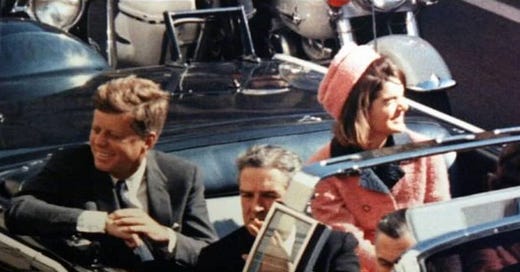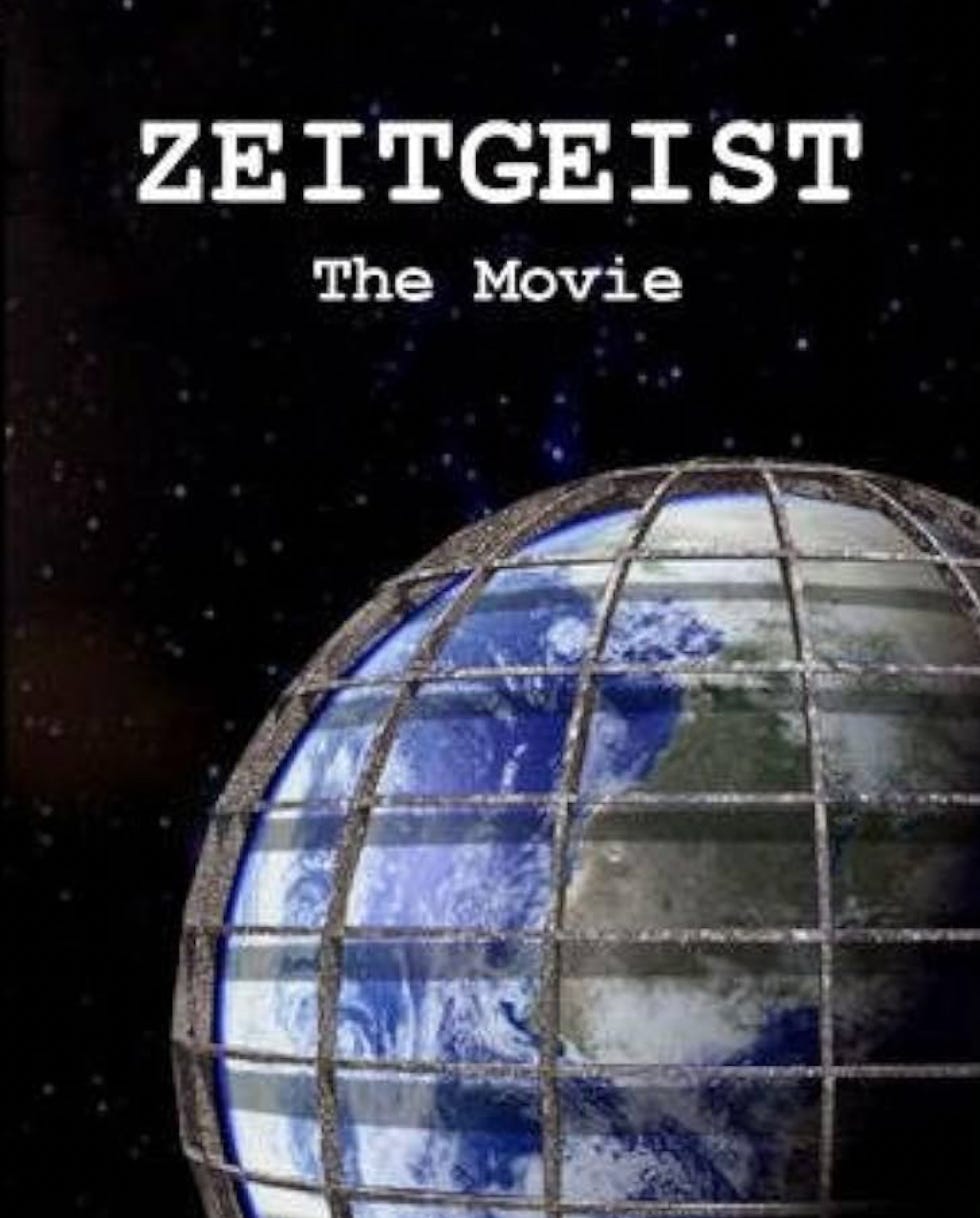The Transformative Power of Film
Something interesting to bring up over Thanksgiving dinner...
The capacity of the average human being to pay attention is being rapidly eroded. We seem to be content to absorb information through headlines, tweets and 20 second long TikTok videos. I believe this is by design to thrust humanity into a state of confusion, disagreement and hyper polarity. This is a necessary step for an infinitesimally small minority that is hell-bent on maintaining authority over a populace that outnumbers them by six or seven orders of magnitude, without their knowledge.
If there are those who wield such power they must know that they must do so invisibly, otherwise people won’t stand for it for very long. The people must be given the illusion of choice, of self-governance, of fair elections, of blind justice and a free press to make sure everyone is playing by the rules. If there are those who wield such power they most certainly don’t want people to be calm, thoughtful, fearless and, most importantly, attentive.
Then again, this could simply be a self-emergent phenomenon, making me a paranoid tinfoil hat-wearing nut job. Nonetheless, it is inescapable that we are collectively losing our ability to maintain our focus for more than a minute or two.
This phenomenon seems to be emerging early in life.
One of the challenges of anesthetizing a toddler is placing an intravenous line so that medications can be administered. Most children of that age will not accede to having a needle anywhere near them. In order to meet this challenge anesthetists use what is called a “mask induction”, a technique where the child breathes a mixture of oxygen, Nitrous Oxide and another anesthetic gas. If the child is compliant and doesn’t resist the process, they will be adequately anesthetized to allow the placement of the IV without recollection or any outward signs of discomfort in about a minute.
The problem is that toddlers are often already scared and hungry on the morning of their surgery and are not willing to go along with anything that a gaggle of masked strangers want them to do. This is where anesthesiology becomes more of an art form than a science.
Twenty five years ago I was taught how to approach this situation with patience and creativity. My mentors made me practice telling stories that began with a magical mask that when worn would take one to places where bunnies romped in meadows filled with flowers which grew into new kinds of candy which they could vaguely smell if they paid attention and took deep breaths. The inhaled anesthetic gas concentration is gradually increased and the child peacefully drifts off into never-never land.
When it works, it is beautiful to witness. Sometimes it doesn’t, and we are forced to crank up the gases and forcibly hold the mask over a crying child, an experience that I am sure is retained in the kid’s memory at some level. But most of the time it works flawlessly.
This seems to be an art form that is quickly being lost. I am observing that storytelling is less familiar to children these days. Most are more comfortable watching cartoons on portable devices. The technology in modern ORs has also adapted accordingly. We now have large screens that can be placed over the operating table with a panoply of kids programming that can be piped into our patient’s young minds as they slip into oblivion.
Pediatric anesthetic inductions are becoming less elegant and more formulaic. Anesthetists recently out of their training are sometimes surprised to see that a child can be smoothly brought to deep anesthesia without the help of SpongeBob SquarePants.
Movies!
Are full length movies our last means of imparting truths that require more than a few minutes of attention from the target audience?
Earlier this month this article appeared on one of my favorite substacks, “The Forgotten Side of Medicine”:
The author, who writes under the nom de plume of “A Midwestern Doctor”, took a brief pause from his/her deep dives into the broad and deep corruption and misconceptions in the medical establishment to remind us of the 2006 movie, “V is for Vendetta”.
The screenplay, written by the Wachowskis (The Matrix series), is based on a DC Vertigo Comic Series released in 1988. The story is based on a dystopian near-future Britain ruled by an authoritarian regime that has slowly amassed power over a largely docile and compliant population that has become distracted by meaningless programming and government-sanctioned misinformation. A revolution is singlehandedly and successfully launched by a fiercely principled, intelligent, swashbuckling demolition expert whose face is always hidden behind a mask.
I watched the movie ten years ago. I vaguely remembered the intriguing mask, a parliament building that was blown up and a powerful performance by a young Natalie Portman. I didn’t remember it as a “Masterpiece”.
I responded to the movie in the same way that I responded to “A Brave New World” when I was forced to read it in high school. An interesting story that has no foundation in reality. Why write about such unhappy fantasies? Why was I forced to waste my time reading them? Obviously modern society could never devolve into centralized control that could engineer a genetically based caste system through misinformation, the eradication of familial bonds and widespread use of thought control and psychedelically enhanced, societally sanctioned, indiscriminate sexual encounters…
Much like my experience with Huxley’s masterpiece, I wasn’t ready to appreciate what “V for Vendetta” offered when I was first exposed to it. I watched it again. I agree with A Midwestern Doctor; it’s a masterpiece.
Zeitgeist: The Movie
The most remarkable thing about “Zeitgeist” is that I was unaware of this film, which was released in 2007, until just two weeks ago. It’s another masterpiece, in my opinion.
For absolutists, there is much here to offend.
Part 1 of the movie openly critiques the foundational story behind the New Testament. The story of a savior, born on December 25, a product of immaculate conception who began his ministry at the age of thirty, flanked by a dozen apostles, who was betrayed, killed and resurrected was not new. It had been told in several cultures which predated the appearance of the Christ figure.
This is not proof that Jesus was no more than a mythical figure, however for the open-minded it raises reasonable questions about the real intent behind the adoption of Christianity by the Roman Emperor Constantine following the council of Nicaea in the fourth century.
Do the stories that bestow the faithful with exclusive rights to enter a heaven or to possess certain swaths of land come from divine sources that can never be questioned? Or are they ploys by powerful institutions to get people to draw lines in the sand and defend them at all costs for ever more?
Part 2 takes a hard look at the official story behind the 9/11 attacks, a subject that this substack has addressed in various ways here, here, here and here.
Citing undisputed official statements from our government which oppose eyewitness testimony and basic laws of motion, the dubious findings of the 9/11 Commission headed by Phillip Zelikow (now head of the Covid Commission Planning Group) and sobering, lucid statements from Richard Gage (founder of Architects and Engineers for 9/11 Truth), Professor Steven Jones and the father of the 9/11 Truth movement, the late David Ray Griffin, Zeitgeist demolishes the official story using what was known 16 years ago.
Part 3 addresses the biggest deception of all, Central Banking and the use of fiat currency to deplete humanity’s prosperity over generations. The story of the genesis of the Federal Reserve is given.
The passage of the Federal Reserve Act, which essentially handed control of this country’s productivity and solvency to the richest commercial bankers, is neither a conspiracy nor a conspiracy theory. Conspiracies, by definition, require the covert collusion of two or more parties. There is nothing covert about central banking. It has always been out there in the open. But why isn’t this ever discussed in Economics 101 or business school?
The movie also tells of the peculiar friendship between Aaron Russo and Nicholas Rockefeller, a member of the Council on Foreign Relations (CFR) and the vastly powerful Rockefeller family whose patriarch, John D. Rockefeller, was one of the central figures behind the Federal Reserve.
Russo claims that Rockefeller told him about the events of 9/11 and their real purpose—to create an endless war on terror and to take away people’s liberties—before they happened.
According to Russo’s statements in a 2007 radio interview, when he asked what was the ultimate goal of those who are behind such engineered atrocities Rockefeller explained:
“…the goal is to get everybody in this world chipped with an RFID chip, and have all money be on those chips and if anyone protests what we do or violate what we want, we just turn off their chip…”
Why did Rockefeller seek out a friendship with Russo and be so candid about such matters in the first place? Could it be because Russo was a successful filmmaker? Russo produced the widely popular movie, “Trading Places”, which interestingly told the story of a rigged financial system, insider trading and character assassinations gleefully conducted by the super wealthy in comedic format. In other words, it didn’t paint the ruling class favorably.
If Nick Rockefeller’s plan was to influence Russo to make movies that would distract and mislead the public in certain ways, it backfired. Russo’s last movie was America: Freedom to Fascism, a political documentary critical of the Internal Revenue Service and the Federal Reserve System and warning about the coming of the New World Order.
Thrive: What on Earth will it take?
Filmmakers, producers and directors Kimberly and Foster Gamble address similar topics in their movie, “Thrive: What on Earth will it take?”
The Gambles’ approach is much more hopeful, devoting the last part of their movie to solutions to the consolidation of power in our governments, the erosion of our liberties and ability to “Thrive”.
Nevertheless, the same players are identified and clear explanations of how control of the monetary supply will lead to poverty for most are given. The Gambles go further, presenting the esthetic and mathematical elegance of crop circles, sharing the possibilities of true, free-energy devices that could liberate humanity and asking questions about the metaphysics of reality that make such devices possible.
The movie, made in 2011, is also prescient, suggesting that pandemics and mass vaccination campaigns would be a reasonable ploy for authority to use to further expand power, the raison d’être of all authoritarian schemes.
A sequel, “Thrive II: This is What it Takes”, was released in 2020:
Conclusion
I would be remiss if I didn’t mention one of the most important pieces of film ever made. It was shot exactly 60 years ago today.
Using an 8mm home movie camera, Abraham Zapruder captured, in 486 frames, the murder of President John F. Kennedy in Dallas, Texas on November 22, 1963. The 26 second long sequence proved to be most troubling to a government that wanted to convince people that their beloved President was killed by a lone gunman acting independently.
It didn’t matter how many officials and experts were in agreement about what this film supposedly proved or didn’t prove about the ballistics, trajectory and number of bullets fired. Thanks to Mr. Zapruder, the public saw what a complete collapse of security looked like. Why was the POTUS in an open convertible rolling through Dealey plaza at such a lazy pace? Why did the driver pause after shots were fired to look back and confirm that the President had half his skull blown off before hightailing it out of there?
There were, of course, ample reasons for powerful interests to see that his presidency came to a premature end. Kennedy was putting America on a path to peace, repeatedly refusing to invade Cuba despite intense pressure from his hawkish Joint Chiefs of Staff. He refused to engage Krushchev in a nuclear exchange or escalate an American presence in Vietnam.
The young Kennedy, standing alone, put the kibosh on every one of the military industrial complex’s most important strategies to further aggrandize their unchecked power. Kennedy said “no” to those who weren’t used to hearing that as an answer. These were also the folks who had the power to arrange security detail for the President, influence an autopsy that was conducted behind closed doors and murder the “assassin” on camera, in cold blood before he could testify in what would have surely been a hearing in which the public would take great interest.
No doubt tag-teaming with younger brother Bobby as Attorney General to dismantle organized crime also created some powerful and angry adversaries, some of whom who were more than willing and able to do the necessary dirty work, if the insiders made the required arrangements—including offering the public a patsy and a flawed official “investigation” that would have to follow.
Means and motive were obvious. Asking hard questions about what really happened sixty years ago was therefore particularly dangerous to the most likely suspects in this coup. The very term “Conspiracy Theory” was conjured up to ridicule those who had the temerity to challenge the Warren Commission and now any other official narrative which deflects attention away from the possibility of a governmental hand in a calamity.
Please share your thoughts about these films and others that are potentially transformative in the comments.
Are movies the best way to influence and educate the public? What kind of movie would you make if you could?









There's a new film out today, Four Died Trying by John Kirby, about the assassinations of MLK, JFK, RFK, and Malcolm. https://www.fourdiedtrying.com/
https://markcrispinmiller.substack.com/p/on-this-60th-anniversary-of-jfks
Recently, my son wanted me to see the new Leonardo DiCaprio film with him. Tremendously high budget, box office blockbuster film.
Me: Naw.
Him: "It's a SCORSESE movie mum."
I declined again. Told him I'm boycotting any production that.Santa Klaus's WEF boy Leonardo is involved in.
I'd rather put my little bit of disposable hard earned cash where my mouth is, and support this Indie, no budget "science fiction" film:
The Gods Of Their Own Religion
https://youtu.be/yxI7lkkqw6U
I made him watch "Idiocracy" when he was probably too young to "get it".
Perhaps he gets it now, so no harm no foul eh? 😉 Sent him the trailer above. Just in case...
PS: Canadian Thanksgiving was over a month ago.
My son was out of town. My fully jabbed sister and the rest of my thoroughly hypnotized extended clan members attended her dinner, however I had to decline the invitation because my motto is now:
"If you can't say something nice, just zip it and skip it."